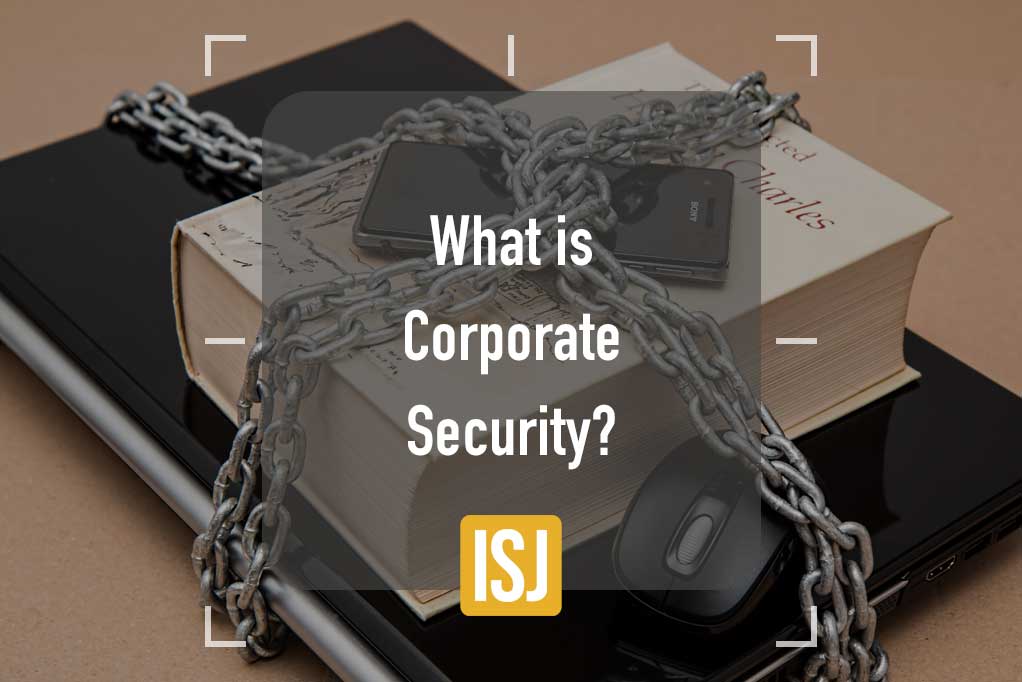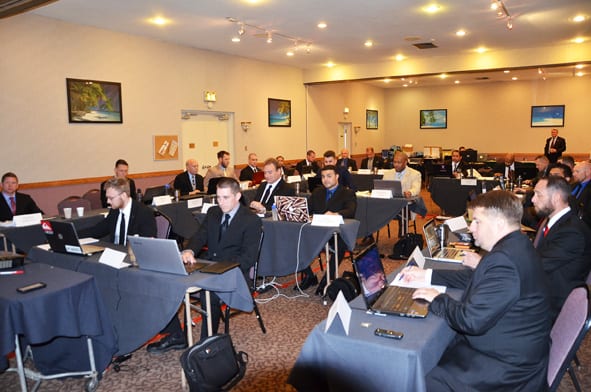From Cybersecurity to Physical Procedures: Strengthening Business Security in a Transforming World
In today's swiftly progressing electronic landscape, the importance of business protection can not be overstated. As cyber threats become increasingly sophisticated and prevalent, companies have to go beyond conventional cybersecurity steps to protect their possessions and operations - corporate security. This is where the integration of physical protection actions comes to be essential. By incorporating the toughness of both cybersecurity and physical security, companies can develop an extensive defense strategy that attends to the varied variety of risks they face. In this discussion, we will certainly check out the altering hazard landscape, the need to incorporate cybersecurity and physical security, the application of multi-factor verification measures, the relevance of worker understanding and training, and the adjustment of security actions for remote labor forces. By taking a look at these crucial areas, we will certainly obtain useful understandings into exactly how companies can strengthen their company security in an ever-changing world.
Understanding the Altering Risk Landscape
The progressing nature of the modern-day globe necessitates an extensive understanding of the changing risk landscape for reliable company protection. In today's interconnected and electronic age, hazards to business safety and security have actually become extra complicated and sophisticated. As innovation breakthroughs and services end up being progressively dependent on digital facilities, the possibility for cyberattacks, information violations, and various other safety and security violations has dramatically raised. It is important for organizations to stay educated and adapt their safety and security determines to deal with these advancing risks.
One trick facet of recognizing the altering risk landscape is recognizing the different kinds of dangers that organizations encounter. Additionally, physical dangers such as theft, criminal damage, and corporate reconnaissance continue to be common concerns for organizations.
Monitoring and evaluating the threat landscape is important in order to determine possible risks and vulnerabilities. This includes staying updated on the latest cybersecurity patterns, evaluating hazard knowledge records, and performing normal danger assessments. By understanding the altering danger landscape, companies can proactively implement proper protection measures to mitigate dangers and protect their properties, reputation, and stakeholders.
Integrating Cybersecurity and Physical Safety
Incorporating cybersecurity and physical safety and security is important for detailed corporate security in today's electronic and interconnected landscape. As organizations increasingly depend on modern technology and interconnected systems, the borders in between physical and cyber risks are coming to be obscured. To efficiently safeguard versus these risks, an all natural strategy that incorporates both cybersecurity and physical safety and security steps is important.
Cybersecurity concentrates on shielding electronic assets, such as networks, data, and systems, from unapproved access, interruption, and theft. Physical safety and security, on the other hand, includes measures to protect physical assets, people, and centers from vulnerabilities and hazards. By integrating these 2 domain names, companies can resolve vulnerabilities and threats from both physical and digital angles, thereby improving their total protection stance.
The assimilation of these 2 disciplines permits for a much more thorough understanding of security threats and enables a unified response to cases. For example, physical gain access to controls can be improved by incorporating them with cybersecurity protocols, such as two-factor authentication or biometric identification. Cybersecurity procedures can be matched by physical safety and security procedures, such as security electronic cameras, alarm systems, and safe gain access to points.

Implementing Multi-Factor Authentication Measures
As companies increasingly focus on thorough safety and security procedures, one effective technique is the execution of multi-factor authentication actions. Multi-factor authentication (MFA) is a security method that needs users to give several types of recognition to access a system or application. This technique adds an additional layer of defense by incorporating something the individual recognizes, such as a password, with something they have, like a fingerprint or a safety token.
By executing MFA, companies can significantly enhance their safety pose - corporate security. Traditional password-based authentication has its limitations, as passwords can be quickly jeopardized or neglected. MFA mitigates these risks by including an additional authentication aspect, making it a lot more hard for unapproved people to gain access to sensitive information
There are numerous types of multi-factor verification approaches available, including biometric verification, SMS-based confirmation codes, and equipment symbols. Organizations require to evaluate their specific requirements and choose the most ideal MFA remedy for their demands.
Nonetheless, the application of MFA must be very carefully intended anonymous and carried out. It is vital to strike an equilibrium between safety and security and use to protect against user aggravation and resistance. Organizations should likewise think about potential compatibility concerns and supply sufficient training and support to make certain a smooth transition.
Enhancing Worker Awareness and Training
To enhance company safety, organizations need to focus on boosting employee awareness and training. Lots of security violations take place due to human error or absence of recognition.
Reliable employee awareness and training programs should cover a large range of subjects, consisting of data security, phishing assaults, social engineering, password hygiene, and physical safety measures. These programs ought to be tailored to the certain needs and obligations of different employee roles within the organization. Routine training workshops, simulations, and sessions can assist staff members establish the needed abilities and expertise to recognize and react to safety dangers successfully.
In addition, companies need to motivate a culture of protection recognition and supply continuous updates and reminders to maintain employees notified about the most recent hazards and reduction strategies. This can be done with inner communication networks, such as newsletters, intranet sites, and e-mail projects. By promoting a security-conscious workforce, organizations can considerably reduce the chance of protection cases and shield their important properties from unauthorized access or concession.

Adapting Safety And Security Measures for Remote Labor Force
Adapting business protection procedures to accommodate a remote workforce is vital in making certain the security of delicate information and assets (corporate security). With the raising trend of remote work, organizations need to implement ideal protection measures to alleviate the dangers connected with this brand-new means of functioning
One vital aspect of adapting protection actions for remote job is establishing safe interaction networks. Encrypted messaging systems and virtual personal networks (VPNs) can aid safeguard sensitive information and stop unauthorized gain access to. In addition, companies should apply the usage of solid passwords and multi-factor authentication to boost the security of remote gain access to.
Another crucial consideration is the execution of safe and secure remote accessibility options. This entails offering staff members with secure access to corporate sources and data through online desktop framework (VDI), remote desktop procedures (RDP), or cloud-based services. These technologies make certain that delicate details continues to be safeguarded while making it possible for employees to do their roles properly.

Last but not least, comprehensive protection awareness training is important for remote staff members. Educating sessions should cover ideal methods for safely accessing and taking care of delicate info, recognizing and reporting phishing efforts, and maintaining the overall cybersecurity hygiene.
Conclusion
In conclusion, find more as the risk landscape remains to progress, it is vital for companies to reinforce their security measures both in the cyber and physical domains. Integrating cybersecurity and physical security, carrying out multi-factor verification procedures, and improving worker understanding and training are important actions in the direction of achieving robust corporate protection. In addition, adjusting safety procedures to fit remote labor forces is vital in today's altering world. By implementing these actions, companies can reduce dangers and safeguard their valuable properties from prospective dangers.
In this conversation, we will discover the altering threat landscape, the demand to incorporate cybersecurity and physical safety and security, the execution of multi-factor verification measures, the relevance of employee recognition and training, and the adaptation of security procedures for remote labor forces. Cybersecurity steps can be enhanced by physical safety and security procedures, such as monitoring cams, alarm systems, and protected accessibility factors.
As organizations increasingly prioritize thorough safety actions, one efficient strategy is the implementation of multi-factor verification actions.In verdict, as the danger landscape proceeds to evolve, it is vital for organizations to strengthen their safety and security gauges both in the cyber and physical domain names. Integrating cybersecurity and physical safety and security, carrying out multi-factor verification measures, and improving staff member recognition and training are important steps in the direction of achieving robust corporate safety.